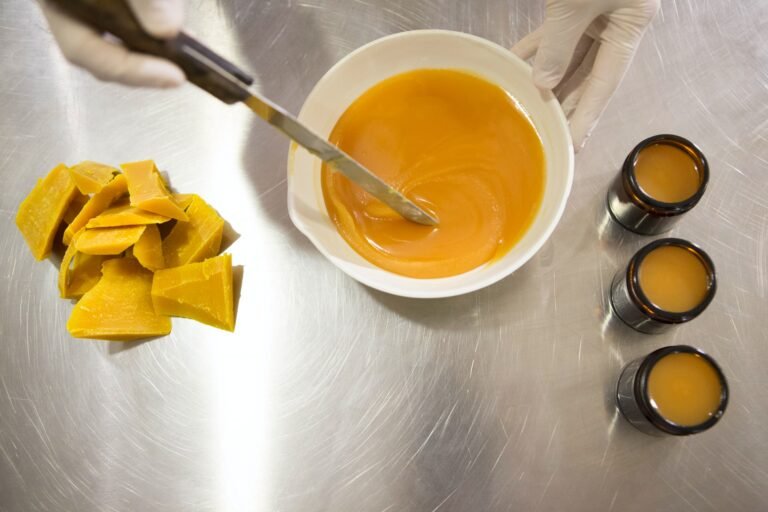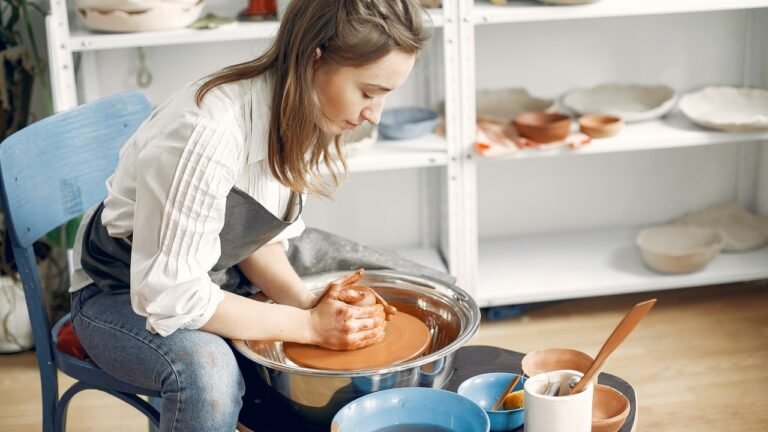What is Greenware Pottery?
In ceramics, it is vital to fire the clay at very high temperatures in a kiln so that it changes chemically and becomes a hardened stone. But, before any piece of clay pottery undergoes fire, it has undergone a stage of production called “Greenware.” Yet, what is greenware pottery?
Greenware Pottery is a process whereby shaped clay has not been fired. Greenware is a term used to describe clay objects in shape but not bisque fired, which transforms them from clay to ceramic. Greenware Pottery is fragile and needs to be bone dried before firing.
Did you know that if the clay feels room temperature or even slightly cool against your cheek, it means it’s dry? Give your pottery more time to dry if it is cold as if it is in the refrigerator. Besides, the more you understand the drying process, the less likely you will have cracks.
Continue reading, and I’ll explain why you should pay attention at the stage where the clay hasn’t been fired.
What is Greenware in Pottery?
Greenware is the term given to shaped clay objects that have not been bisque fired which converts them from clay to ceramic. The term bisque fired used in the sentence above refers to wares that have been heated once and have no chemically bonded water left in the clay. Greenware pottery is delicate, and it must be bone dried before firing.
What Are the 3 Stages of Greenware?
Pottery goes through three stages in the manufacturing process before firing.
- Plastic Clay is the first stage named after it’s original and moist form which is soft and bendable. It allows you to manipulate, stamp, and easy molding. Furthermore, you can make coils and other creative ideas with soft, pliable plastic clay.
- The leather-hard stage of clay is the second stage. The clay is dark in color, like plastic clay. Besides, leather-hard clay has a much harder surface than plastic clay and contains little moisture. Evaporation begins, but the clay is not completely dry. You can use tools to carve, cut, or attach clay pieces to the surface and create various patterns.
- The bone-dry stage is the third stage of clay. Remember how leather-hard is dark in color, indicating that it is still moist? Yes, but there’s no moisture left in it when it’s completely dry. Because of its light color, you won’t be able to attach anything to it. The clay is at its most fragile stage at this point, and even the smallest amount of pressure on bone dry clay will cause it to snap or break. As a matter of fact, when it comes to the final stage, you must exercise extreme caution when handling your clay.
Interestingly, if you add water to leather-hard clay, bone-dry clay, or plastic clay, they all become soft and pliable again, and you can rework them.

How Fast Should I Dry Greenware in Pottery?
Experimentation is the key to whatever type of work you produce. Pottery drying requires a steady process with attention. It takes a week or two for pottery to dry completely, sometimes longer.
The amount of time it takes to dry depends on the size, thickness, and shape. Besides, what determines how fast it takes to dry is the clay’s shrink rate, as well as the environment. Water takes time to flow through a mass as it tries to reach the surface where evaporation occurs. Hence, the surface areas tend to be dryer and shrink faster than internal areas.
Importantly, you should never rush the drying process to avoid cracks and internal stress that could manifest later in the fire. It’s better to start with a longer drying time than you think you’ll need and work your way back to get the best results. Cups with handles, for example, need more air to dry faster and shrink more than cups without handles.
At the same time, the air currents might cause your work to dry unevenly. Cover your pieces with a loosely woven synthetic fabric, making sure there are no open areas around the bottom where the fabric could pleat. It is also possible to construct a chamber that can maintain controlled humidity.
How Do You Tell If Greenware Is Bone Dry?
To determine whether greenware is bone dry or not, it must have lost all the moisture it can before firing. Bone-dry greenware is typically dry to the touch, and while it is solid, it is also fragile. The color of bone dry clay is lighter than the color of workable clay.
It also feels lighter in weight than before due to the loss of a significant amount of water. It is quite crumbly and delicate. If it is not handled with care, it may break.
The clay must feel room temperature, to confirm the greenware is bone dry.







